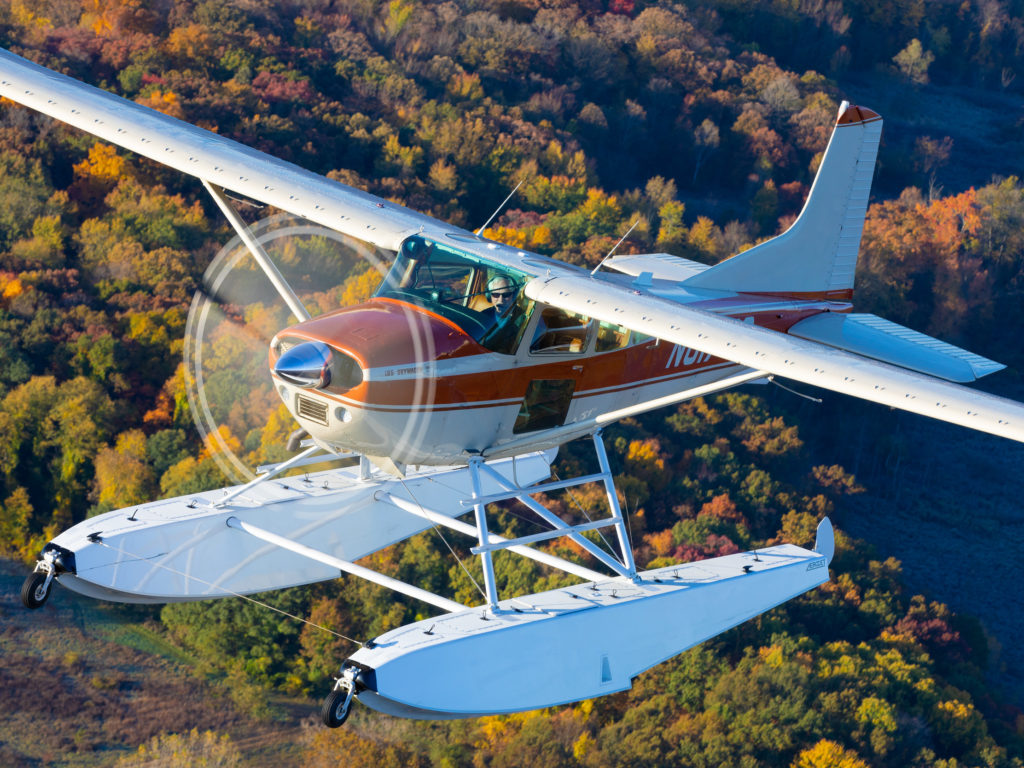How do I become a Seaplane Pilot?
Earning the rating
The simple answer to that question is that you become an official, properly credentialed seaplane pilot by earning the FAA Single- or Multiengine Sea (SES and MES) class rating on your airman’s certificate, or in the case of a Sport Pilot flying a Light Sport Aircraft, you earn a seaplane endorsement in your Sport Pilot logbook.
The rating or logbook endorsement is earned through formal instruction. The FAA does not specify a minimum amount of instruction required to earn the rating or endorsement, so it’s up to you and your authorized seaplane instructor. It may be as few as four hours of dual flight instruction, or many more if you want to be razor-sharp on all aspects of handling a seaplane including operating out of confined lakes, docking, and river ops.

PRACTICAL TEST
No written test is required for an SES or MES rating, but ground and flight instruction must be received and logged, and the instructor must recommend you for the practical test. The practical test is administered by the FAA or a designated pilot examiner and consists of an oral exam and check ride. Each covers only those procedures unique to seaplane flying.
The rules are different if you want to fly a Light Sport Aircraft (LSA) seaplane, either as a certificated pilot or a Sport Pilot. No SES rating is required to fly an LSA seaplane as Pilot in Command. Instead, a logbook endorsement from an authorized instructor is required. Typically, that endorsement is based on successful completion of ground and flight instruction similar to what an SES candidate would take, and a proficiency check by another authorized instructor.
Training for a seaplane rating or LSA logbook endorsement has little to do with airwork. In the air a seaplane is an airplane –– pull the stick or yoke back, the houses get smaller; push it forward and the houses get bigger. You will spend some time getting used to somewhat different handling in the air due to the yaw-inducing characteristic of most floats as compared to a wheelplane, and practice loss-of-power emergency descents, but for the most part seaplane training is all about water operations.
Along with aerodynamics, you’ll add hydrodynamics to your aviation knowledge. You’ll find that seaplanes typically are heavier than land planes because of the additional weight of the floats compared with wheels, and that the water adds significant drag on the takeoff run. The additional weight and drag take a performance penalty, which means that seaplanes typically require a longer takeoff run on the water and offer a lower useful load.
WIND AND WATER
Wind and water are the two major factors you’ll learn to consider when flying a seaplane. You’ll learn to evaluate a potential water landing area for wind direction and speed, water conditions (glassy smooth, wind streaks, small waves, or whitecaps), and check for obstacles in and around the water.
You’ll learn about the three ways to taxi a seaplane on the water –– idle taxiing, plow taxiing, and step taxiing –– and when it’s advisable to use each. You’ll learn how to recognize when the seaplane is properly on the step (planing as in a boat), and when to lift off. You’ll practice normal, rough, confined and glassy water takeoffs and landings, sailing techniques to maneuver on the water in windy conditions, and docking and beaching procedures.
And, most important, you’ll have fun. Lots of fun. It’s difficult to describe the experience of your first water landing –– the approach over the shoreline, the gentle flare, feeling for the lake surface, the floats or hull slap-slapping the water, the airplane settling as it slows and, finally, coming to a gentle, floating stop. Take a moment to breathe deeply and look around. It is a very strange and wonderful feeling to realize you are sitting in an airplane that you’ve just landed on the water and in a moment, you’ll be taking off from the water.
Airplanes and water are a strange, wondrous combination. You’ll enjoy every moment of it!

